The Unknown American
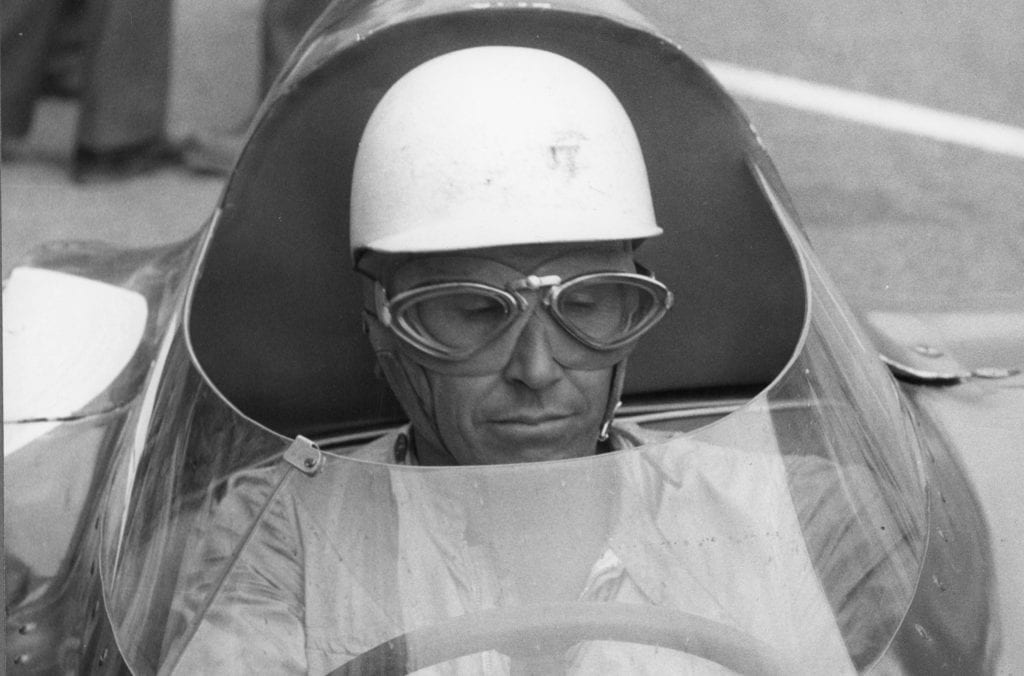
HERBERT MACKAY FRASER
RACING DRIVER
1927-1957
The Unknown American
Now that Liberty Media has bought Formula 1, it’s thought the U.S. company will bring more Grand Prix racing to the States.
A new Formula 1 season is about to begin, once again with no drivers from the U.S. Time, perhaps, to consider the American drivers who raced in that sport.
We know of Phil Hill, Dan Gurney, Mario Andretti, Peter Revson, Richie Ginther, Mark Donohue, Eddie Cheever, Alexander Rossi and more, but what about MacKay Fraser?
Bet you’ve never heard of him.
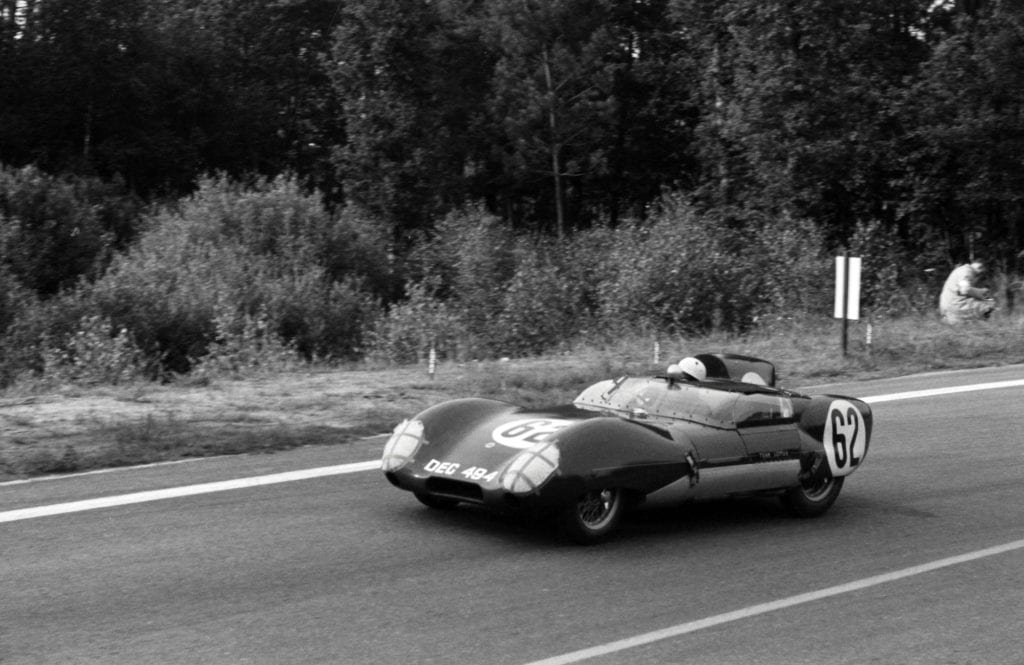
Formula 1 drivers dying in racing accidents was frightfully common in the 1950s. Some died in their open-wheel cars and others bought it in sports racers. Newly crowned 1958 World Driving Champion Mike Hawthorn was killed in a road accident.
Countries grieved for their lost drivers. England for Hawthorn and Peter Collins. Italy for Luigi Musso and Eugenio Castellotti. France for Jean Behra. Spain for Alfonso de Portago. But Americans never grieved for Herbert MacKay Fraser, the first of its racing sons to be named to a post World War II Grand Prix team. Likely hadn’t even heard of him.
I once asked Phil Hill if he knew Fraser. Yes, of course he did. He was there the day the young driver died. And he helped bury him in France. Phil took up the story:
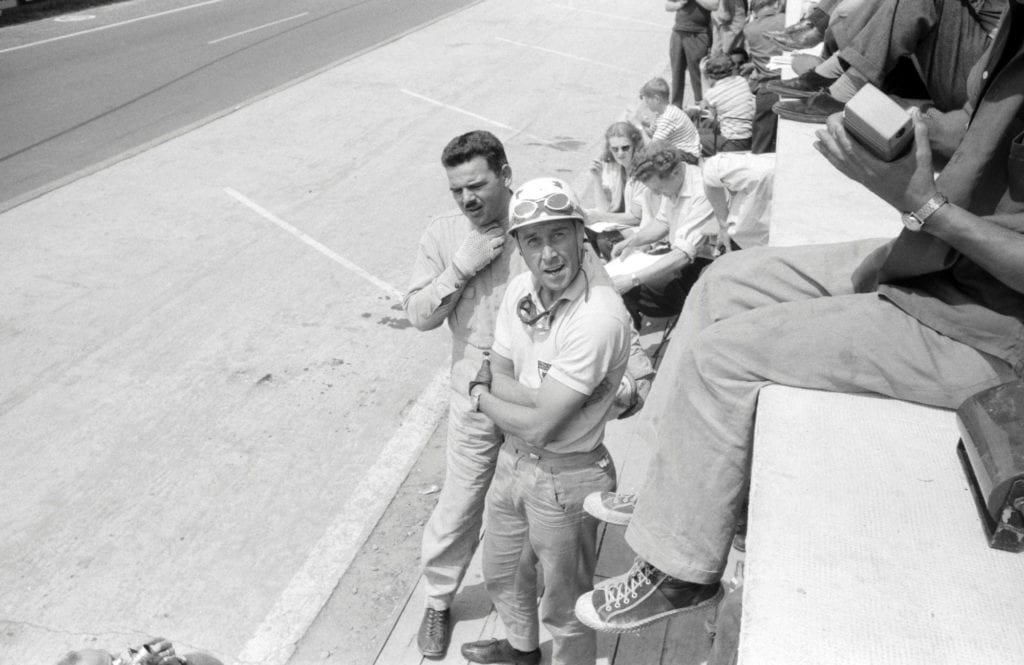
“MacKay Fraser came looking for a job at International Motors in what I guess was 1953. There was always a rumor he had plenty of money from his mother, and did have enough cash to put himself in some decent race cars.
“Obviously there was a tremendous amount of talent packed away in MacKay Fraser. You can’t be as competitive as Mac was against the world’s best without a lot of raw talent, but what he didn’t have in those dangerous years was the stuff it took to lengthen his odds of living through it all.
“I found his motivations for racing to be suspect. We were in a very dangerous business at the time, with drivers dying left and right, so it only seemed a little reasonable to question why we did this crazy thing.
“And yet, here was Mac, rocketing ahead in his career, unable to address the very things I question about myself. He wouldn’t come back from a lap and analyze why he did this or why that happened. He just did it.
“He did it well enough that by 1957 he had worked his way into a tryout with the BRM F1 team at the French Grand Prix, which was held at the difficult Rouen circuit.
“Although his car eventually broke, Mac was able to hold on to fifth spot for a while. BRM figured that was enough to earn him a place on the team. Although I knew him quite well, I don’t know if money played any part in BRM’s decision to choose Mac, but I do know no other Americans, with or without money, had done this since the war. His first race as a team member would be the English GP at Aintree in two weeks, July 20.
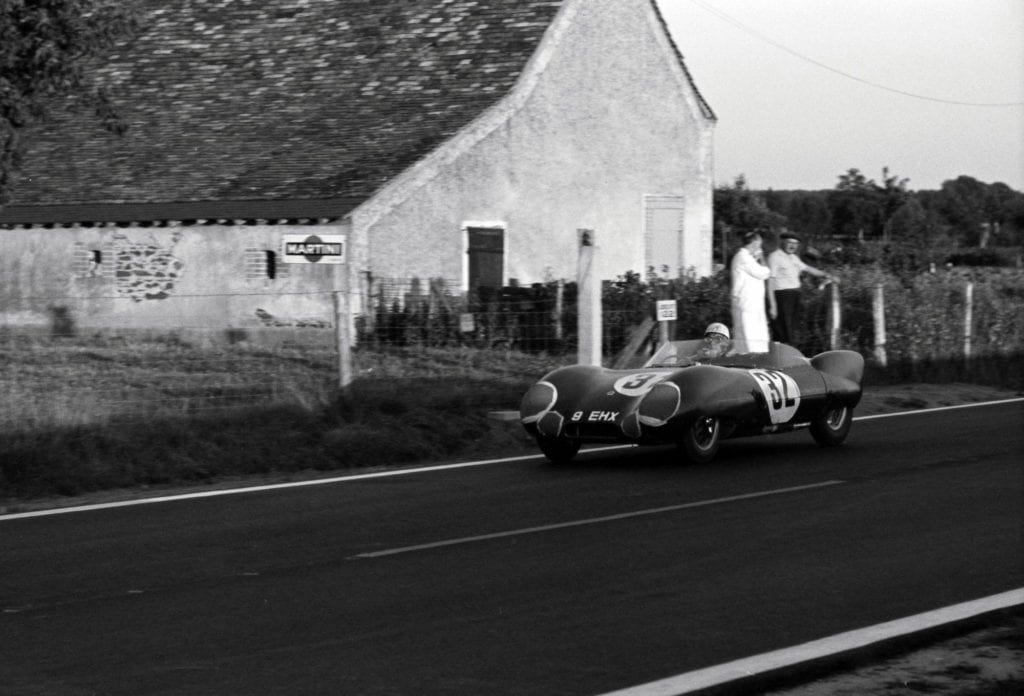
“There was a great rivalry between the French circuits of Rouen and Reims. Because the former had been awarded the country’s GP in 1957, the latter was given a sports car race, a Formula 2 event and a non-championship Fl event on the weekend between the points-paying French and English GPs.
“Mac had raced quite a bit for Lotus, and even co-driven with American Jay Chamberlain to a win in the 1100-cc class at Le Mans that year. He would drive for Lotus again at Reims.
“Needless to say, Mac was excited about his upcoming BRM team drive, but first had this F2 drive at Reims. Sadly, on the straight after the infamous Dunlop curve and before the La Hovette crossing, Mac went off and was killed.
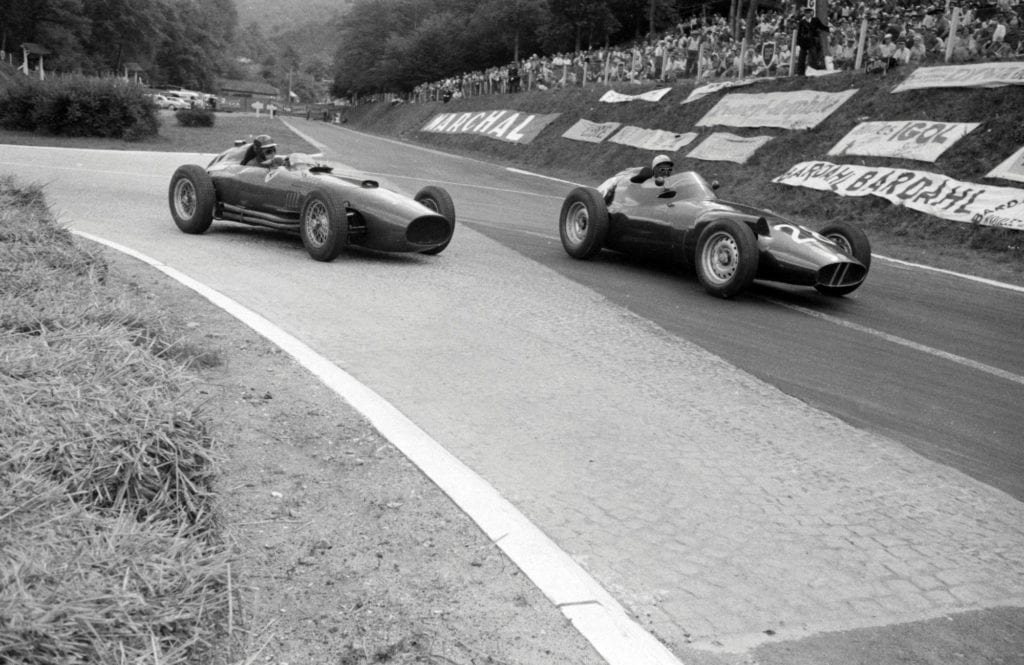
“No one knows exactly what happened. Denise McCluggage and I were watching the F2 race, and when we heard of Mac’s accident–and not knowing he was dead–went searching for the hospital to which he’d been taken. We had a terrible time getting the correct information about where to go, and when we finally arrived at the clinic, a young doctor looked at us with surprise and said, ‘Why, he’s dead!’
“Once when my wife, Alma, and I were in Europe with John Lamm, we stopped at the old circuit of Reims. Caught up in the nostalgia of the moment, I decided to try to find Mac’s grave.
“I had a map of Reims, and a rough idea of where to find the cemetery. Somehow my brain homed in on the place as if I was being drawn to it. The cemetery attendant knew of the old grave of a race driver, over there, somewhere, and pointed to hundreds of headstones.
“But the magic worked again, and I seemed to know the basic direction. We had trouble finding the actual grave because the headstone was hidden behind a thicket of gold dust plants. But I pushed them aside, and there it was:
HERBERT MACKAYFRASER
RACING DRIVER
1927-1957
“We were the same age when he died.
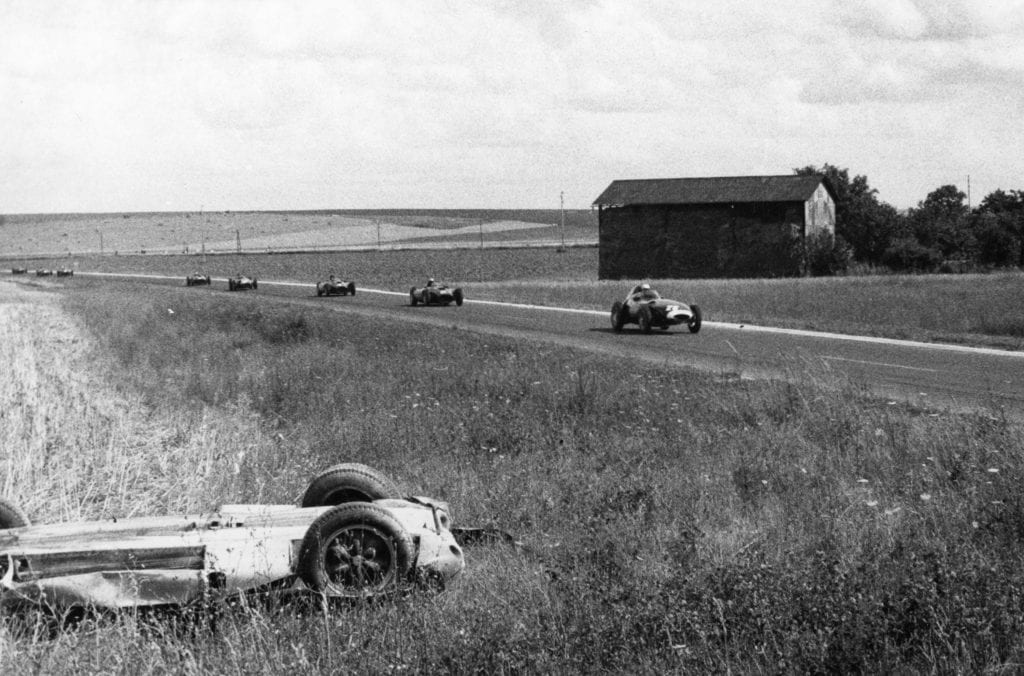
“A telegram was sent to Mac’s mother about his death, but all we ever heard back was a wire saying, ‘I AM SORRY TO HEAR OF THE DEATH OF MY SON.’
“He’d left his wife Marga little money, so Mac was buried in what was essentially a pauper’s grave. A year or so later, Jo Bonnier collected money from the drivers to give the site perpetual care, and the place is still well looked after.
“It all seems so sad now to look back on MacKay Fraser’s death. To think that the first American nominated to a Grand Prix team after the war is lost to our national racing history, almost anonymous behind shrubbery in a cemetery in Reims, France.
“Or, was it sadder that we drivers were so willing to turn our backs on those frequent deaths and put them aside because next week we had another race in another country?
“I guess it’s not important anymore.”
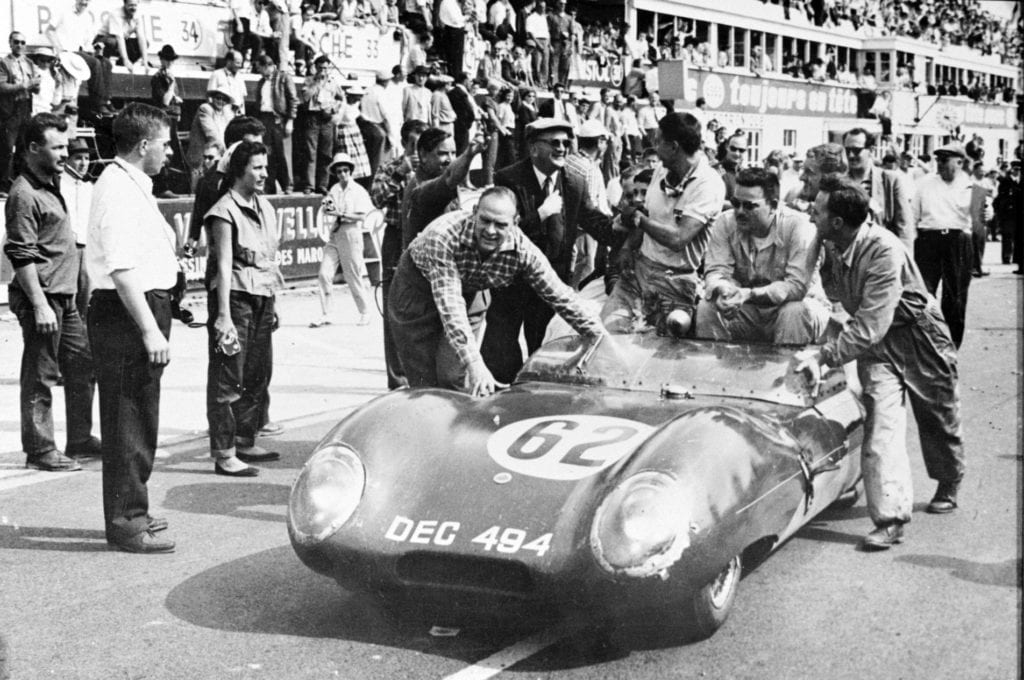
*Main photo by Jesse Alexander.